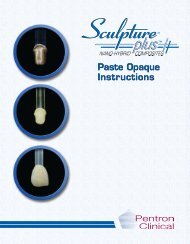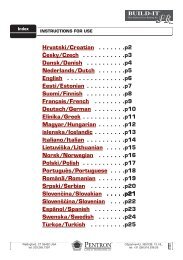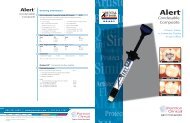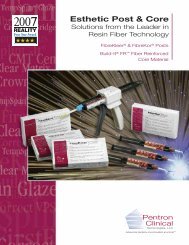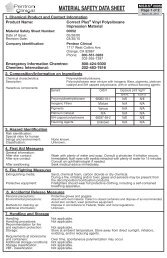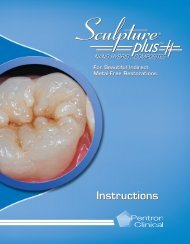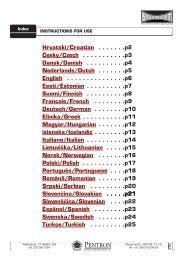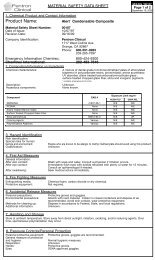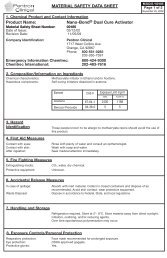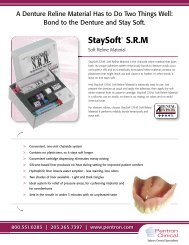Instruction - Pentron Clinical
Instruction - Pentron Clinical
Instruction - Pentron Clinical
You also want an ePaper? Increase the reach of your titles
YUMPU automatically turns print PDFs into web optimized ePapers that Google loves.
F I B E R R E I N F O R C E D C O M P O S I T E S ( F R C )<br />
3 - U N I T F U L L C O V E R A G E B R I D G E T E C H N I Q U E<br />
27. Apply a small amount of FibreFlo resin onto the axial walls and in the lingual and buccal corners of the abutment as shown. (Fig 19)<br />
29. Using tweezers, gently form the remaining length of FibreKor 4K material around the axial walls of the abutment. (Fig 20)<br />
30. Carefully adapt the material to the corner of the abutment and to the lingual surface of the bar. (Fig 21)<br />
31. Ensure that the loop of 4K material is thoroughly adapted to the framework with no voids between layers.<br />
32. Light cure with the Spectra-Lite ® cure light, or equivalent, for 30 seconds. (Fig 22)<br />
33. Repeat steps 19 to 32 for the remaining abutment.<br />
34. Create the pontic form by placing a short strip of FibreKor 16K material on the lingual and on the buccal of the formed bar as<br />
shown (Fig 23). Adapt to the formed bar. Note: FibreKor material forms only the framework for the restoration. Be sure to leave<br />
room to cover the framework with 1-2 mm of Sculpture Plus Composite.<br />
35. Apply a small amount of FibreFlo resin to the occlusal area of the pontic. (Fig 24)<br />
Fig. 19<br />
Fig. 20 Fig. 21<br />
Fig. 22<br />
Fig. 23 Fig. 24<br />
12



